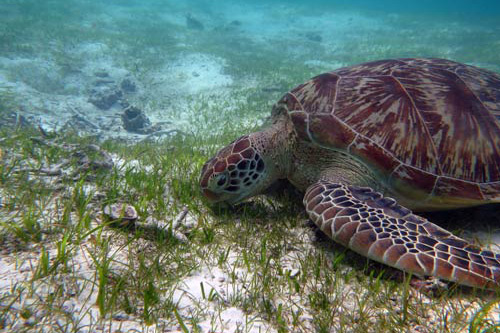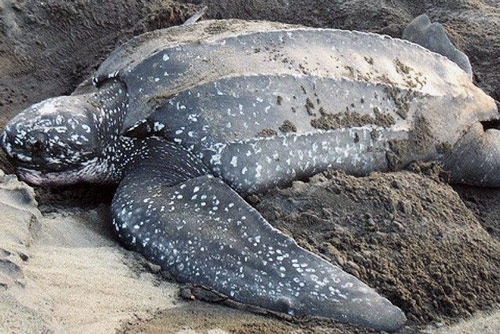Sea turtles can perform a variety of thermoregulatory behaviours to stay warm in colder waters, such as basking at the surface of the water during the warmer times of the day, and in some cases, on beaches! Also, they tend to restrict their movements to warmer, tropical and temperate waters, or microclimates where water heats up faster (eg. shallow reefs and seagrass lagoons).
Leatherback turtles, however, are an exception. They may be found feeding in very colder waters (e.g. north of the arctic circle), where jellyfish are abundant. This is only possible as their black carapace acts as a good insulator, as well as their large layer of body fat (blubber) under their skin. This species also possess physiological control mechanisms that promote optimal heat exchange between their circulatory system and muscles.


References:
- Bostrom, B. L., Jones, T. T., Hastings, M., & Jones, D. R. (2010). Behaviour and physiology: the thermal strategy of leatherback turtles. PLoS One, 5(11).
- Paladino, F. V., O’Connor, M. P., & Spotila, J. R. (1990). Metabolism of leatherback turtles, gigantothermy, and thermoregulation of dinosaurs. Nature, 344(6269), 858-860.

